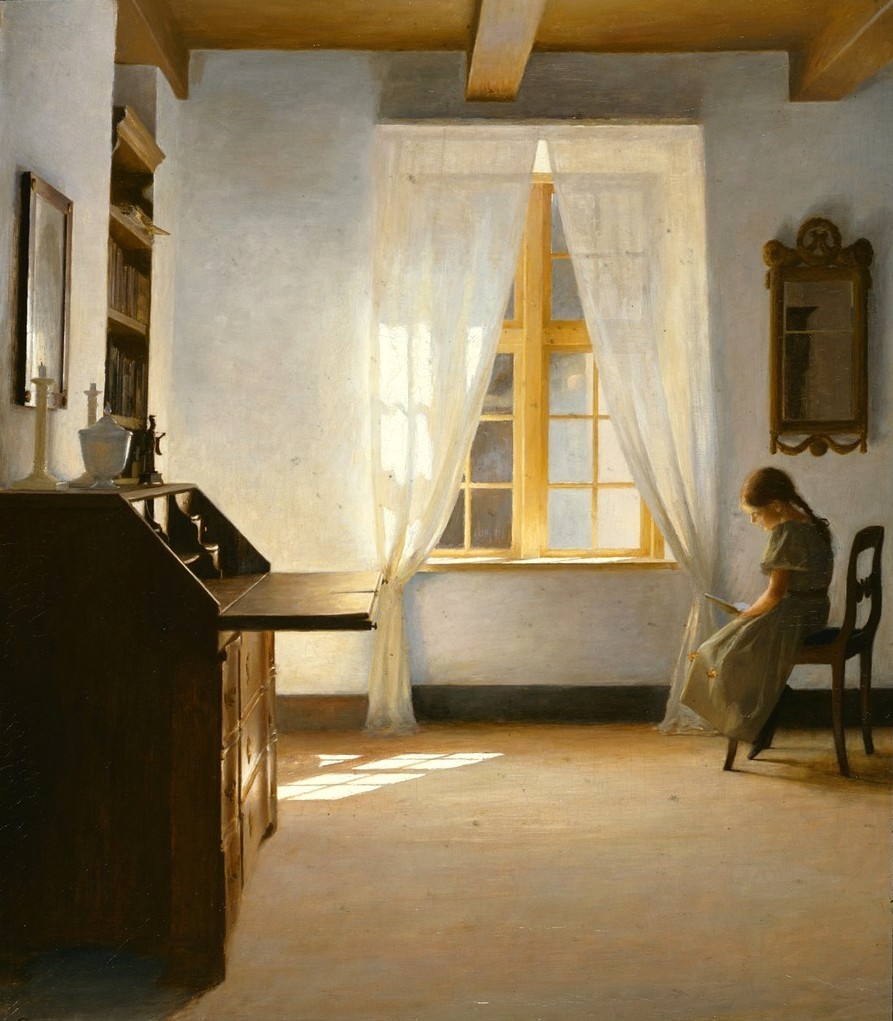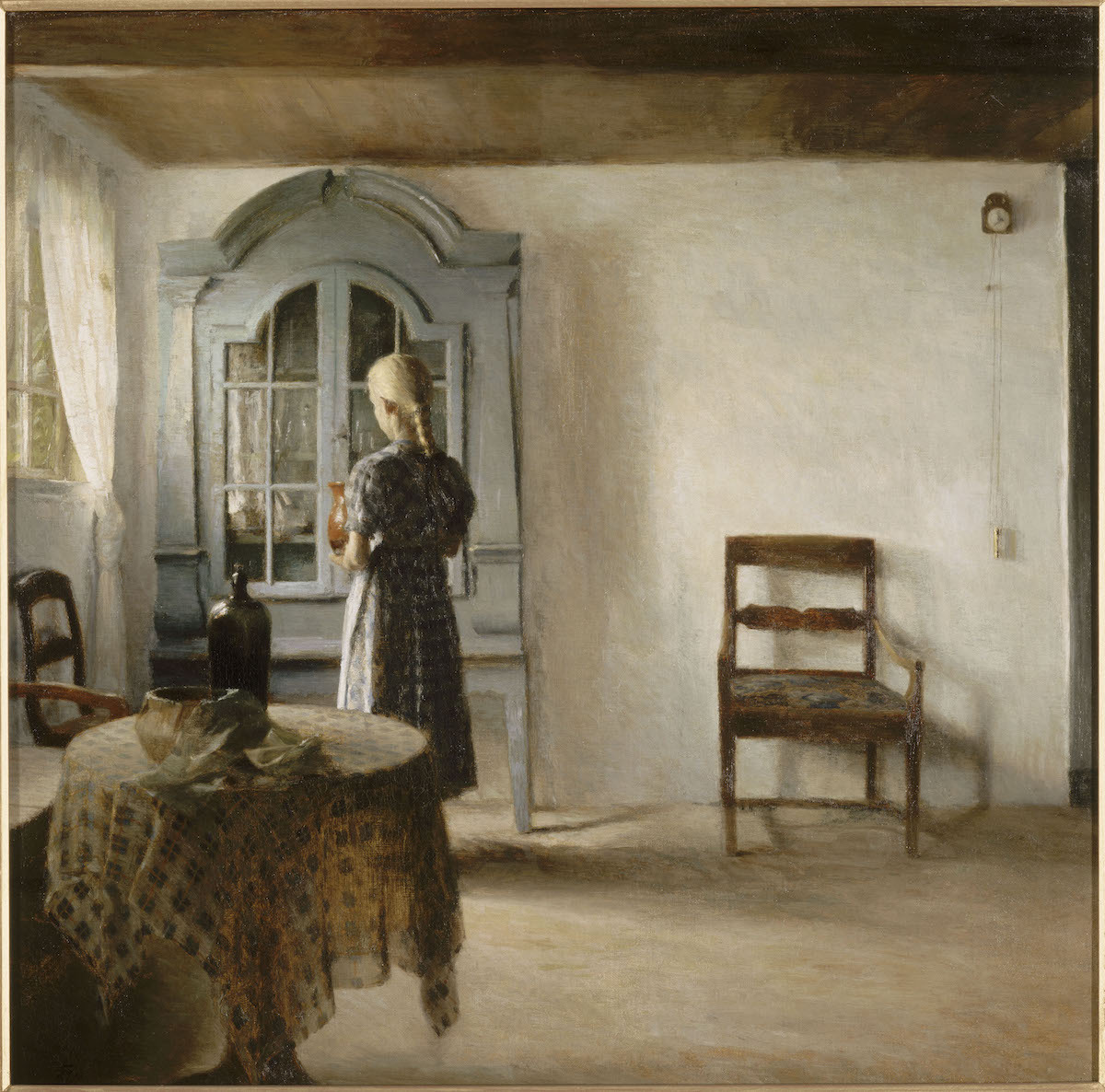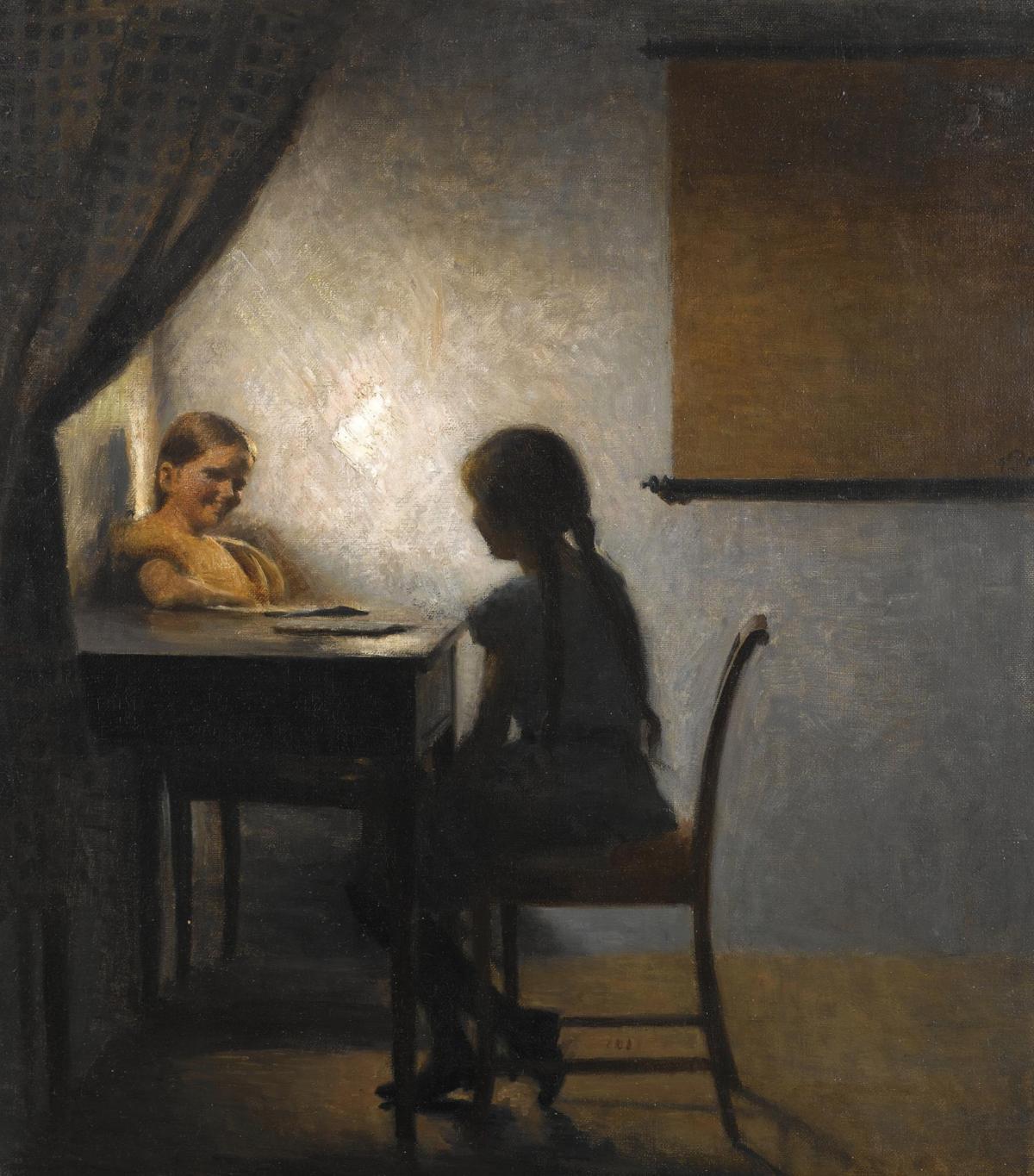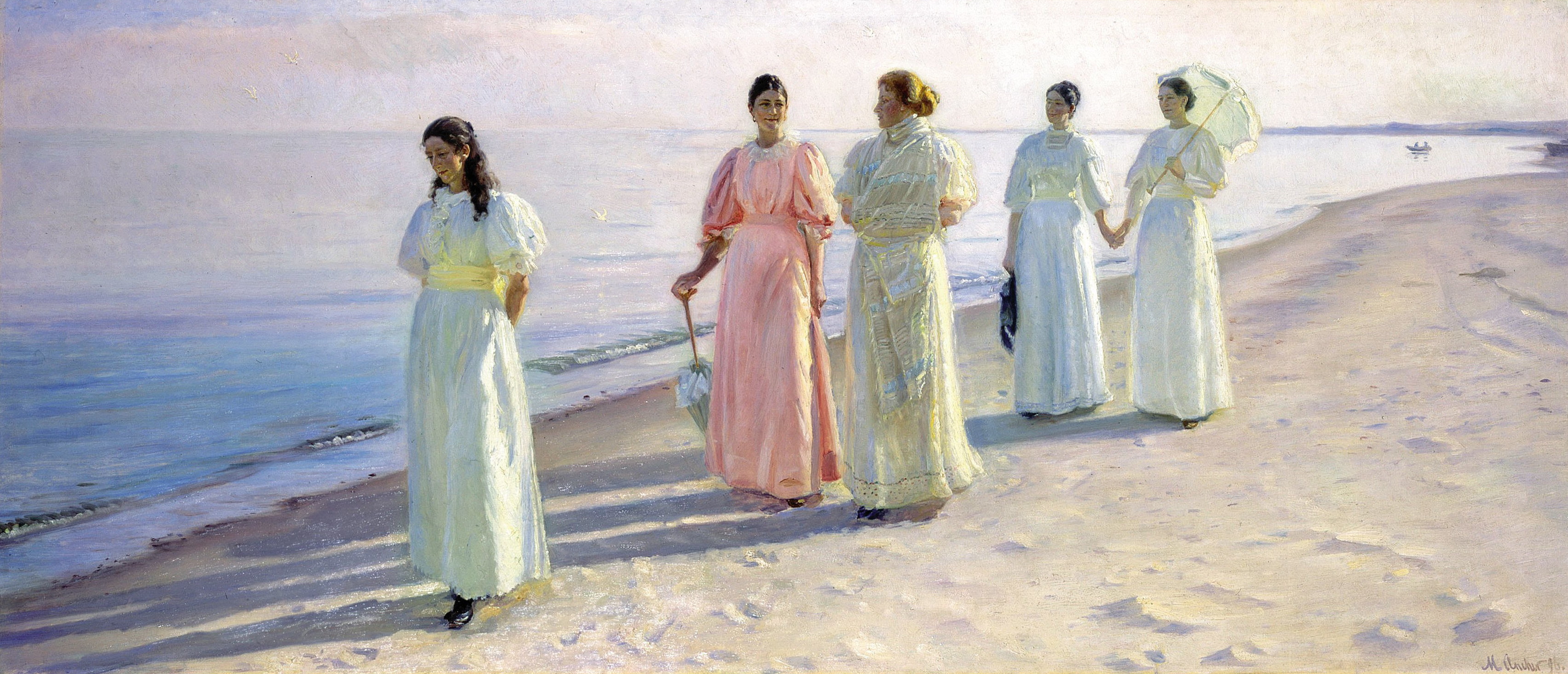Out of the three leading Danish painters in the early twentieth century; Peter Ilsted (1861-1933), Carl Holsøe (1863-1935) and Vilhelm Hammershøi (1864-1916), it was Peter Ilsted who brought the warmth, the yellow rays of sunlight, coziness and quiet cheerfulness in his interior scenes, while imbuing them with the little bit of the mystery, the kind that haunts Hammershoi’s well-known interiors. Ilsted was the oldest of the three painters, born on Valentine’s day in 1861, and his sister Ida later became Hammershoi’s wife and appears often in his interior scenes, as a mysterious figure in black.
 Peter Vilhelm Ilsted (Danish artist, 1861-1933), Two girls playing, c. 1900
Peter Vilhelm Ilsted (Danish artist, 1861-1933), Two girls playing, c. 1900
Ilsted’s painting “Two girls playing” exudes loveliness and warmth. Sunlight is streaming into the room, pale, peachy-orange and yellowish, and suddenly the same minimalist Northern interior which would appear cold and distant in the paintings of Holsoe or Hammershoi, is filled with quiet sweetness and hopes. Two girls, perhaps sisters are playing with something. They turned their backs on us, they don’t care about us because whatever they are playing with is far more amusing. Their appearance is matching; dark dresses under white aprons, little black boots, hair in a single plait follows the line of the neck and ends in a little bow. While the lighter haired girl is kneeling on the chair, the other seems to be standing on the tips of her toes to see better that secretive toy which seems to provide them both with so much amusement. I can imagine them chatting quietly, even giggling, but all in moderation, for the children ought to be seen but not heard. An interesting detail to notice are the paintings on the wall, little paintings in a painting, figures on them are shadowy and dreamy.

Peter Vilhelm Ilsted, Interior with girl reading, 1910
The painting “Interior with girl reading” from 1910, is again filled with the same Ilsted-esque sunshine, silence and tranquility. Sweet moments at home, the coziness and the safety. The future, its trials, tribulations and uncertainties are miles away from this little girl reading a book in her drawing room. How sweet and shy and modest she appears, in a simple grey dress, hair tied in a braid, completely absorbed in the book she is reading. What thoughts occupy her sweet and innocent mind? The bookshelf, the mirror and the drawer are the only pieces of furniture in this simple room, but again there is something warm and cozy about it which doesn’t appear in the paintings of Ilsted’s contemporaries Holsoe and Hammershoi. I love how Ilsted continually achieves this delightful warmth and coziness in his interiors with little girls playing, reading or chatting, without allowing his canvases to fall into the abyss of sentimentality. Far from it, these paintings are equally thrilling and mysterious as any interior painted by Hammershoi. This delicate, gentle portrayal of the home life and childhood resonated with me, the warm orange-yellowish light that colours the space in his interiors almost fills me with nostalgia. Just take a look at that golden sunlight on the floor, how yellow and tangible it appears! It makes me wanna lie there and take a nap like a cat.
It being winter; cold and dreary, and I am weary, weary of it, my thoughts go to “Northern” painters and writers. I recently read Knut Hamsun’s novel “Hunger” originally published in 1890, and while he isn’t a Danish but a Norwegian writer, some interior scenes by Hammershoi and Ilsted came to my mind because these cozy, quiet and sunny interiors are a stark contrast to the cold and unwelcoming outside world. “Hunger” is written in the first person by an unnamed narrator who is struggling to get his writing published, his extreme poverty brought him to the state of perpetual hunger and this hunger makes his nerves frail and his behavior somewhat eccentric. In one scene from the novel, he keeps staring at a window until a girl’s face appears, they stare at each other for a while, but then her lovely countenance disappears behind the thick white curtains, the borders between the outside world and the indoor coziness, the narrator continues staring at the window, feeling curious and slightly embarrassed.
I wonder, if the girls from Ilsted’s painting would leave their books and their toys, and if they looked through the window and saw a thin, hungry man in a tattered suit, with wild untamed hair and crazy eyes, how would they feel about him? A mix of pity and fear. Would they stare for some time, until their mother or the servant chased them away from the window because it’s inappropriate to stare at the outside world. This simple and sober middle class interior is a safe cage for the girls-birds; they are too shy, too innocent and too sweet to see the reality out there, on the other side of the curtains and windows which serve are protectors. Whatever crazy stuff is going on outside, none of it can harm them.

Peter Vilhelm Ilsted, Interior, 1897

Peter Vilhelm Ilsted, Interior with two girls, 1904













